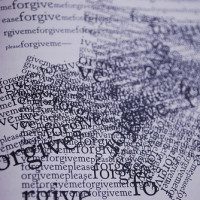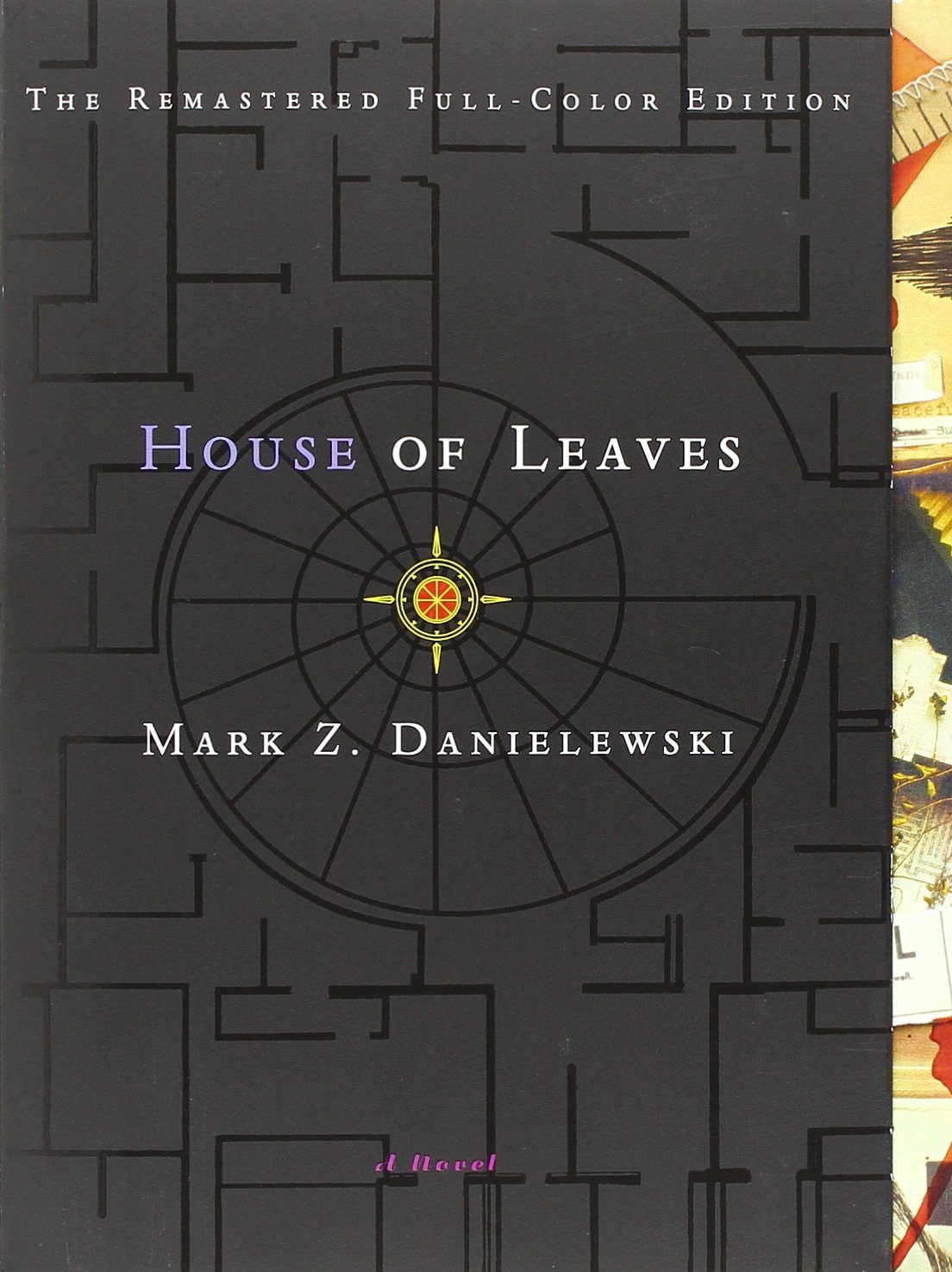The first thing that you notice about the full-color second edition of Mark Z. Danielewski’s House of Leaves (just as with any book) is the cover. It’s not an ornate design, so that’s not what will strike you first, although the compass needle and outwardly spreading nautilus, the glossy lines of rooms in a house against matte-black paper are all lovely touches. What you notice is the size of the cover, a choice which foreshadows the primary moving force in the novel.
It is is roughly a half an inch shorter than the book.
I should start, before going into detail, by giving you the gist of the novel: House of Leaves is a book about another book, about a film (and all related criticism about that film) about a house. To be more specific, its narrator, Johnny Truant, recounts in the introduction that he was asked to come over to his best friend’s place and look at the dead body in his neighbor’s apartment. This neighbor, Zampanò, died very peculiarly—there are large claw marks on the floor where he died (from what you’re only left to guess) – and the only thing of any real discernible value is a large stack of handwritten papers, Zampanò’s study of a film known as The Navidson Record. But, not only is Zampanò blind, there’s also no evidence that the actual film or most of the academic writings cited in Zampanò’s papers exist.
The film itself is even more disconcerting. It begins benignly enough, following Pulitzer Prize-winning photographer Will Navidson as he buys a house in Virginia with his wife Karen and his two kids. Then Navidson begins to install cameras in almost every room—not as an act of creepy voyeurism, he says, but in order to faithfully document what he see as a moment of rebirth for his strained family. It is in the process that he discovers something physically impossible: that the house is actually bigger on the inside, by half an inch, than it is on the outside. This one revelation is the truth reveals the house’s inherent darkness, a darkness which has disastrous effects on all its inhabitants and those close to them.
A story like this could be told in a fairly straightforward fashion, but it wouldn’t be told as well. Every sliver of text has meaning, even text not in English or in other characters. The novel is copiously footnoted, for example, but in Chapter IX, as they dive deeper into the labyrinthine nature of the house, these footnotes are less often numbered and more often headed with symbols from ground-to-air emergency code. The first such one used is the symbol for ‘Unable to Proceed,” which is referenced not only several times in the chapter, but also by other footnotes. In other words, if you obey them, you’ll never move forward: the chapter itself is now a labyrinth.
This style can be polarizing. Either House of Leaves is the kind of book that is right up your alley or it isn’t. Several readers had called it gimmicky, assumed it has nothing of value to say thematically. Although I think they’re wrong, I can’t fault them for shying away from that which they can’t (or won’t) understand. What I admire about the book is that it can pull it off. Writers always say that if you want to write, reading is the best apprenticeship you can have; in that sense, House of Leaves is a very eccentric teacher of prose, for those who wish to find more colorful ways of getting the reader’s attention.
People often describe books according to how cinematic they are—they describe seeing a movie version of the story in their heads. What makes House of Leaves stand out to me is that it doesn’t allow readers to do that. This is a book that’s about more than what words are used in a sentence and how; it’s about how they are presented. Danielewski allows no wasted moments on the page. Everything means something, even things the author chooses purposely to obscure from you. There is nothing about the act of reading House of Leaves that is passive. This book requires effort.
I grew up on “Give Yourself Goosebumps” (the “Choose Your Own Adventure”–style spinoff of “Goosebumps”) in primary school. Though it wasn’t very often that I had money to buy a book, I still amassed a considerable stack of them (until some calamity exposed them water damage). I would read them over and over in the dark by flashlight, finishing one path toward fright only to start back at the beginning until I had explored every available option. Those books are the first step to what Espen J. Aarseth calls “ergodic literature.” I hadn’t noticed until I discovered House of Leaves how much I loved reading stories where, as Aarseth says, “nontrivial effort is required to allow the reader to traverse the text.” Even more, I want to write those kinds of stories—stories where you can’t simply turn pages and slide your eyes across the black line of text, but where the act of reading is just as dynamic as the act of processing what you’ve read.
That kind of effort is the same behind James Joyce’s Ulysses, to some degree, or Marc Saporta’s Composition No. 1. One cannot simply read and then digest. Readers much read more actively before they can even get to the point of understanding. Being able to engage readers in more ways than just page-turning is a feat I find impressive, and House of Leaves opened my eyes to entire genres, styles, and techniques that can be used just to elicit this more active role.
I would have never before contemplated the notion of the reader as explorer, player, code-breaker, and more until I myself had seen a novel that is its own labyrinth, that asks the reader to play, that trusts the reader to decode. I imagine not a lot of people confess to loving a book because it inspires them to write better rather than because it entertains or touches them, and I’m not saying that House of Leaves doesn’t entertain or touch. Above all, though, it challenges me. This book prompts me to write something like it, and to find other people who have done so or are trying. It forces me to ask myself whether breaking the mold with my own writing should include, at times, writing beyond the margins.






3 responses
I read Mark Z. Danielewski’s ‘House of Leaves’ years ago when it was first released, and it has always stayed with me … rustling in the back of my mind.
Beautiful review. It made me re-read HOL. I never considered how “working” to read it is similar to working your way through a maze. That the work of reading first this footnote and then that appendix is actually an integral part of feeling how it must be feel to be inside of a labyrinth, going down one path only to backtrack and try another.
I loved House of Leaves. My best friend and I both read it in high school and then co-wrote a collection of experimental poems that we made our creative writing class suffer through. We even met Danielewski after a panel. He drew a few little pictures with colored markers in my copy of the book instead of just autographing it.
I don’t aim to write like him anymore, but that book was still a big influence.
Click here to subscribe today and leave your comment.